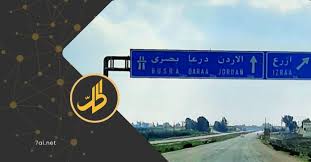In the wake of the collapse of Bashar al-Assad’s regime in December 2024, Iran is making renewed efforts to re-establish its presence in Syria—particularly in the country’s southern region. According to local sources, Tehran is attempting to revive its former militia networks in Daraa, the Yarmouk Basin, and areas along the Syrian-Iraqi and Syrian-Lebanese borders, following failed attempts to re-enter the Syrian political scene through diplomatic and proxy channels.
Despite losing much of its influence accumulated over more than a decade, Iran appears to be taking a more covert and localized approach this time. Sources told Al-Majalla that small cells in towns such as Lajat, Tafas, and surrounding villages have recently received funding from figures linked to Lebanon’s Hezbollah in an attempt to rebuild loyalty networks aligned with the so-called “Resistance Axis.” These groups are being marketed as a defensive force aimed at countering Israeli operations in southern Syria.
Funding and Strategic Patience
According to confidential sources, over $200,000 in funding has recently been funnelled into Daraa to support this effort. The money reportedly came through intermediaries once connected to Hezbollah commander Kamal al-Hussein, who was assassinated by a local group in August 2024 near the village of Al-Jasri in the Lajat area. Al-Hussein was a key figure in Hezbollah’s southern Syria operations, previously linked to the now-defunct Liwa al-Hadi militia. Other recipients of the funds are said to have ties to Hajj Walaa, Hezbollah’s former chief operative in the south.
While no active operations have been launched, potential recruits are reportedly being told that the current phase is one of “observation and organization”, with military activity to follow once the timing is deemed appropriate.
Stirring Instability
A former fighter from the Ghaith Forces, a militia affiliated with Syria’s notorious 4th Division and backed by Hezbollah, told Television Syria that the new Iranian-backed cells are in an “incubation phase”, being prepped for future assassination campaigns, bombings, and other destabilizing actions. These efforts are believed to be designed to disrupt security in southern Syria, particularly in Quneitra and the western countryside of Daraa, where Israel has carried out multiple airstrikes targeting Iran-linked operatives.
The goal, according to the source, is to provoke new tensions between Syria’s transitional government and Israel, undermining the fragile security landscape that has emerged in the post-Assad era.
Government Response
A senior official from the General Security Directorate in Damascus confirmed that the government is aware of Iran’s intentions and is taking them seriously. “Iran will not easily accept its loss in Syria,” the official stated, adding that surveillance and counter-infiltration teams have been deployed across several key regions, including the south, to monitor and curb any attempt by Iran to rebuild its proxy networks.
With Syria entering a delicate political transition and regional powers redefining their roles, Iran’s shadowy manoeuvres in Daraa signal not only a desire to reassert influence—but also a warning that the proxy conflicts of the past may not yet be over.
This article was translated and edited by The Syrian Observer. The Syrian Observer has not verified the content of this story. Responsibility for the information and views set out in this article lies entirely with the author.


